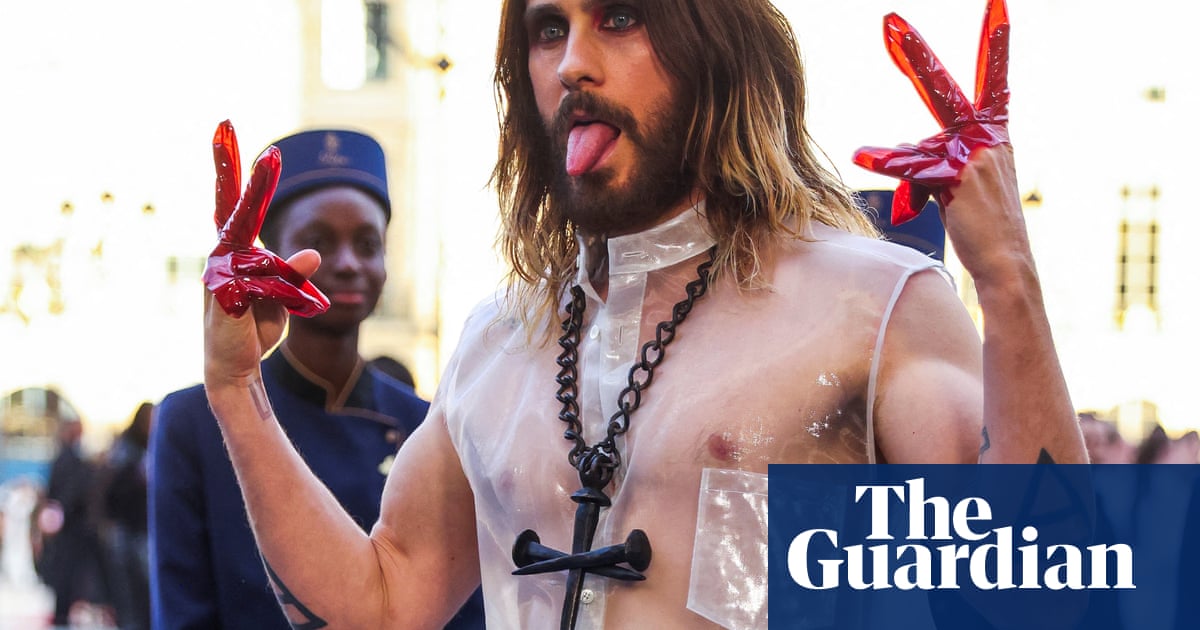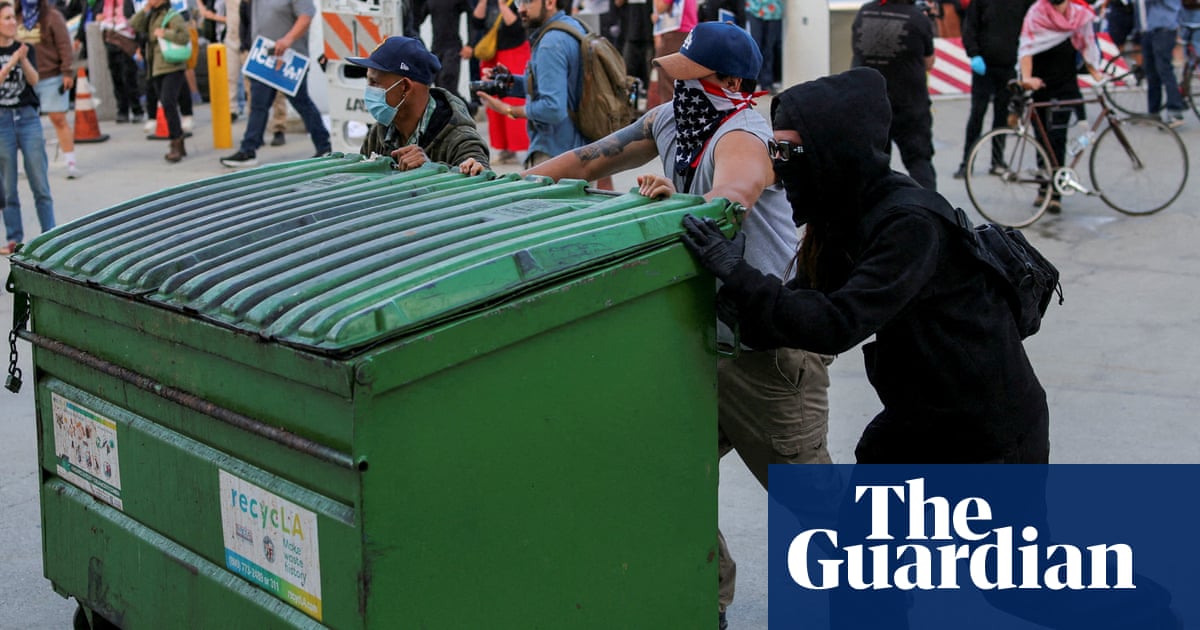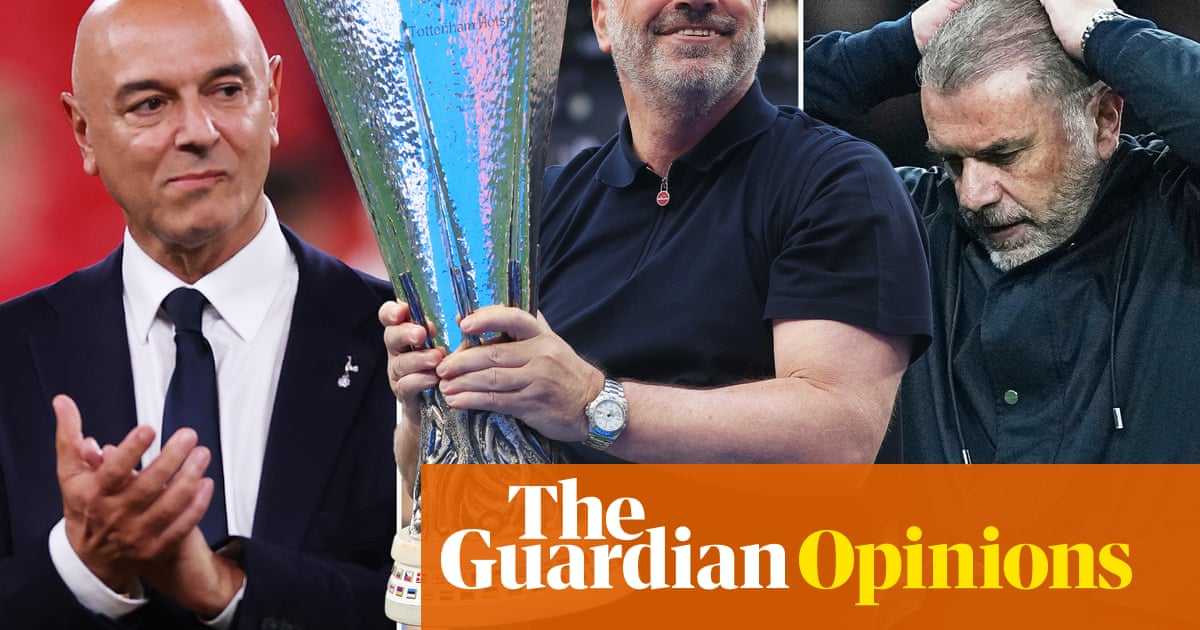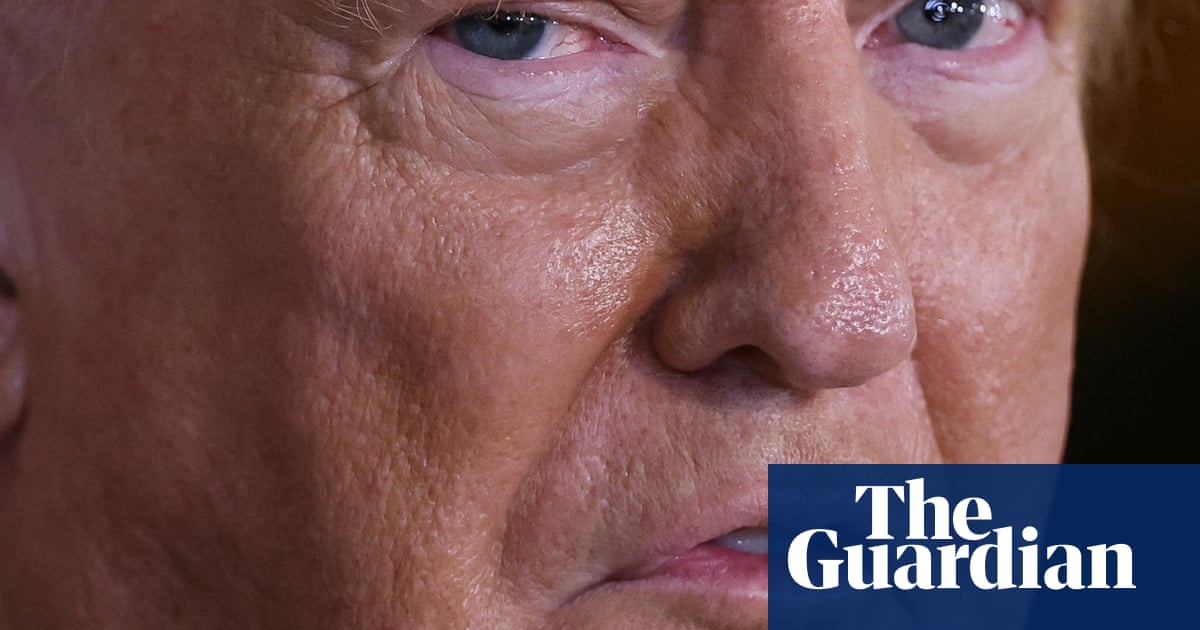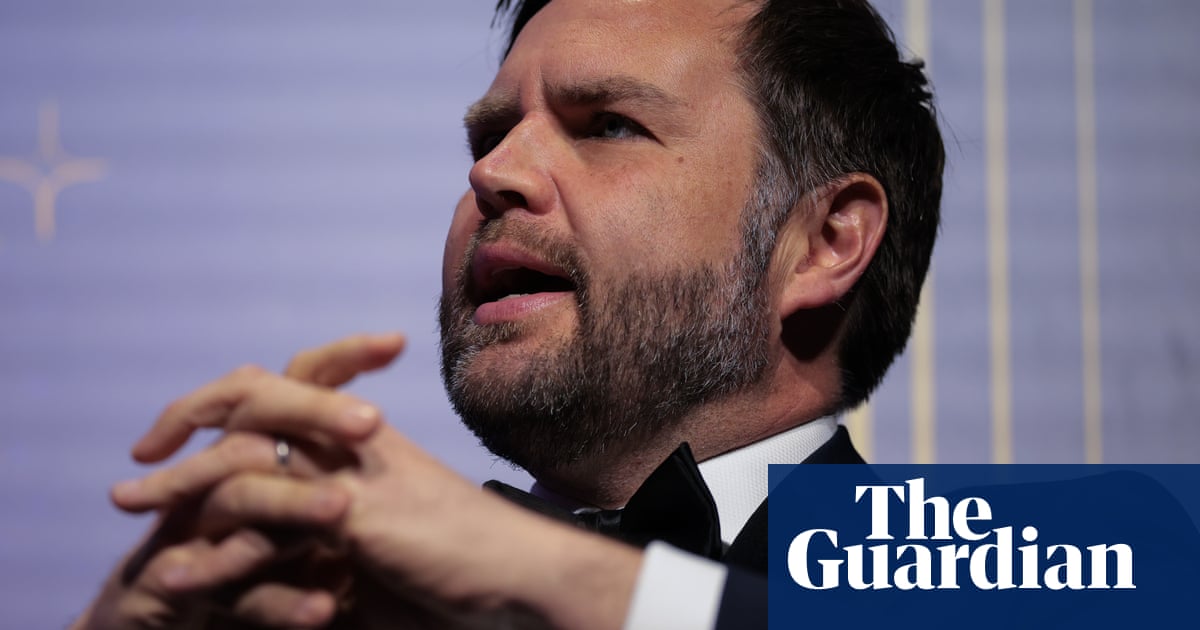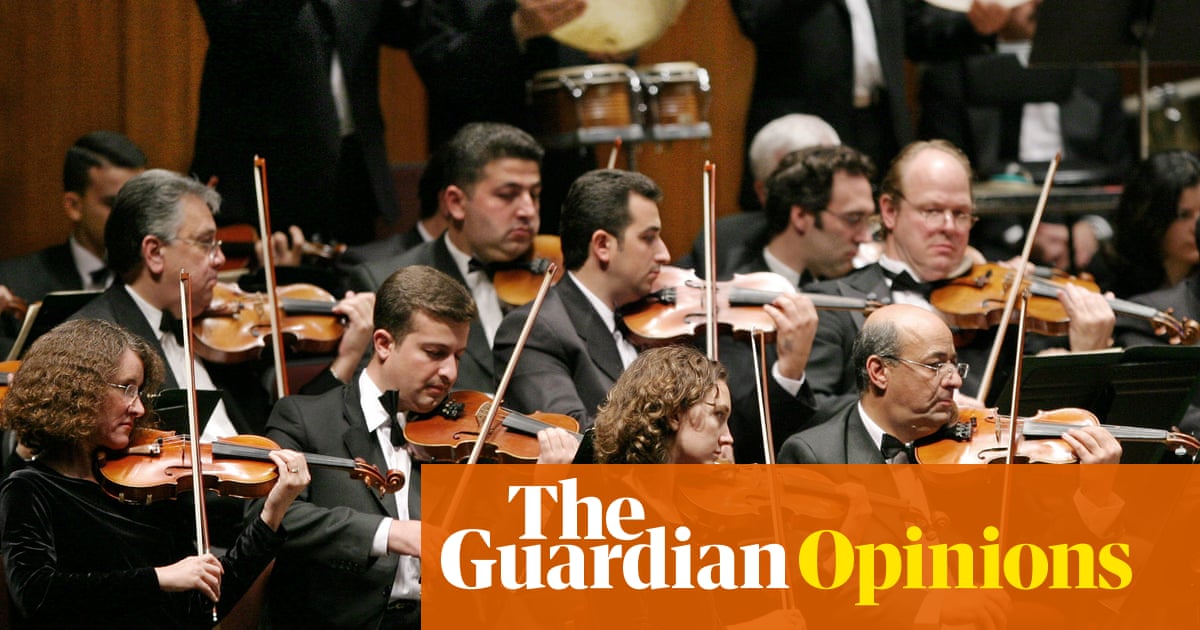It can be a fun exercise during Manchester City games to imagine the contents of Pep Guardiola’s inner monologue, the stream of consciousness inside that whirring cranium as he strides his touchline, arms revolving, dressed these days in flowing Jedi robes, skater trainers and guru scarf, like a bald indie-Gandalf.
Most of the time Guardiola seems to be worrying about tiny details, correctively raging at shape, positioning and pressing patterns, muttering things like Jack, Jack, NO JACK, NO JACK. YES JACK. Who knows? Maybe he’s just wondering if he should have worn the quilted over-gown after all.
But it wasn’t hard to take a best guess at Guardiola’s thoughts on Tuesday night as he caught a first glimpse of the petty, harmless but also oddly revealing tifo banner draped across the south stand before kick-off.
This was a really big night for City’s manager. There has been talk of Guardiola feeling “invigorated” by the trip to Orient at the weekend, revived by the source‑energy of the FA Cup, the entire trip a kind of Rocky Balboa training regime, Pep out there pulling a sledge full of rocks down Leyton high street, high-fiving passersby. But Real Madrid in a knockout tie: this is home, clarity, first principles, a chance to refocus every drop of mental energy at the level that defines his professional existence.
Except, suddenly someone is waving a massive pre-match internet-bantz flag mocking the opposition over a bullshit individual award via the use of Oasis lyrics (Stop Crying Your Heart Out; release date 2002; peak chart position in Spain, six). And mocking specifically Madrid’s most dangerous player, who will in a few minutes be sprinting directly into the arc of a full-back Pep knows is held together with glue and string.
Pep is obsessed with details, and this is at the very least one of those, and a strange one too. As City’s season continues to narrow before the second leg in Madrid next Wednesday, welcome to Anatomy of a Tifo, and what it tells us about this most confused and confusing of super-clubs.
To be clear, it really doesn’t matter in itself. This is not a big deal. It’s a big piece of material. With some words on it. No lines have been crossed. Fans can say stuff. Yes, Rodri may have been surprised to find himself up there gloating at his Spanish friends and colleagues over an award received at the time with winning humility. Hmm. About those image rights.
Also yes, it makes the champions of England look small and overly fixated on someone else’s reaction to your own nice moment. Even if Real Madrid started this by behaving like deranged toddlers when Rodri received the gong ahead of Vinícius Júnior. And yes it looks bad on the newly founded Stay Humble Scale when you end up collapsing like a damp sheet of newspaper and losing 3-2 at home.
But it is also just some words. Football has always been a place to shout and mock and taunt people. Pep probably didn’t even notice. The Madrid players, who have six of these golden balls in the past 12 years, won’t have cared at the time. It took Vinícius an hour to find the right angles and begin the process of torturing City’s replacement right-back. He wasn’t running on banner energy.
On the other hand if the Titanic has taught us anything it is to beware of constructing powerful self-propelling metaphors of doom. The tifo is significant solely because it seems to capture a moment. And to capture also the scene of an organisation slightly losing the run of itself, and in areas that actually matter.

Who authorised this banner? Generally these things are created by supporters. It is unclear at the time of writing whether the club have a sign-off on content. Either City did know and thought this was a good message, which is a bit weird. Or they just let their fans decide what message to present to the watching world, which is also odd.
Even this wouldn’t really matter if City were currently a happy, functioning club, redolent with good choices from top to bottom. But in a place defined, suddenly, by defeat, bad decisions and a strain of trapped internal rage, it becomes a thing. If only because City’s problems on the pitch are a product of other bad decisions, a rare and surprising loss of focus on the detail.
It might be tempting to present recent on-field collapses as a product of existential angst, era decay, systems rot. But the panic spending of the January window points to a more prosaic truth, a simple failure of recruitment over the past two years. The failure to strengthen when it was clear the squad was growing thin has left Guardiola reliant on a few very good players. The Rodri tifo could equally have been a message to City’s hierarchy. Cry now. This is what you’re missing. This is what happens when you fail to buy a back-up. City have never really let the playing culture drift. It seems like a significant oversight.
after newsletter promotion
The tifo also speaks to a wider energy and culture, an institution stuck fighting wider corporate wars, that has become, in the process, a little unhappy. What image of a champion club does that banner project? Paranoid, angry, obsessed with trivia? Are these good things?
Defiance has been part of the character of the club in its old and new eras. For decades City were blue-collar underdogs. To present yourself, still, as outsiders, when you have spent close to £2bn in the past 10 years and reshaped the ecosystem of English football, when you’re owned by an autocratic monarchy using the club and English football as a propaganda tool; this requires a genuine degree of cognitive dissonance.
Is it good for the soul to live out this illusion for too long? Victimhood and conspiracy theory have stalked some parts of the fanbase for the past few years. The atmosphere inside the stadium is in danger of reflecting it. And that strangeness, the rage, the sense of aggressive victimhood flows right from the top.
There is something paradoxical about the way City and Madrid perceive themselves. Here they come, rebel emperors, railing against the injustice of commercial rules (also known as: sport) or imagined notions of bias, kings of a world they still want to tear down. Digesting the defiant club statements, the talk of bondage within a rigged system, feels a bit like hearing Prince Andrew has got himself a smash the state tattoo and is out there moaning about nepo babies.
These are the two richest clubs in the world, at a time when football has never been so rich. What is it for, this angry acquisitiveness? What is it serving when you no longer win, or play beautiful football, or create an exemplary structure? City have always been a cold project to the outsider. That sense of galvanising rage is in danger of becoming their defining energy.
There is also an opportunity here for some of the club’s fans to question, just a little, the aggression of their owners; the need to take destructive legal action against your own structure; the corporate line of victory at all costs, more lawyers, total commitment to the “freedom” of very rich people to control a sport. Will it be taken up?
At least the flag doesn’t matter. Flags are flags. It is in the end just noise. The most worrying sign on Tuesday was the wider, amplified sense of distraction, of a place that feels for the first time as if it is slightly losing its own strict and hugely impressive sense of order.

 3 months ago
49
3 months ago
49
